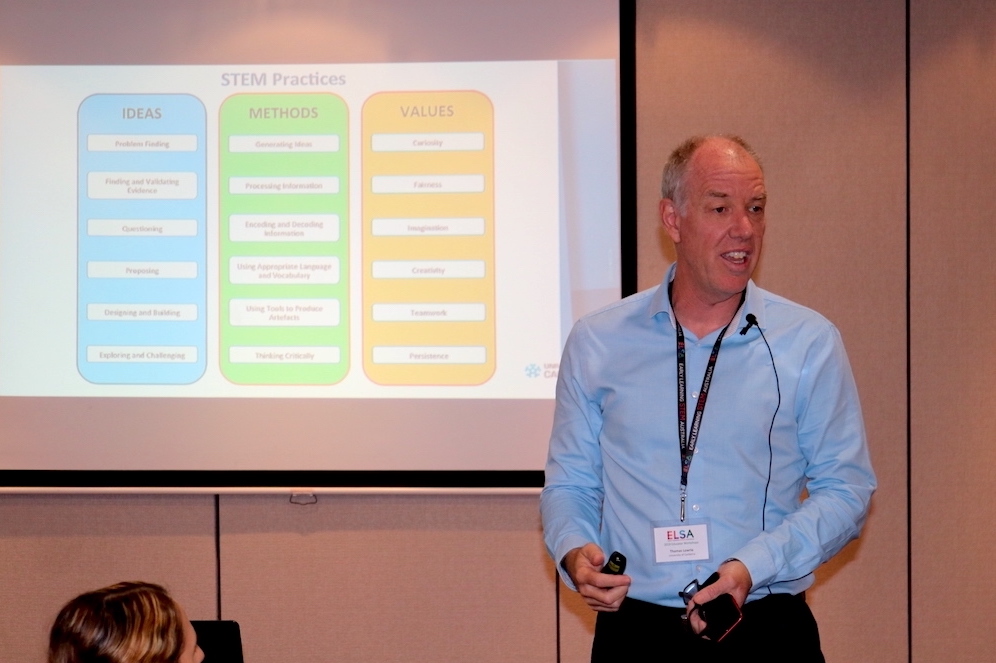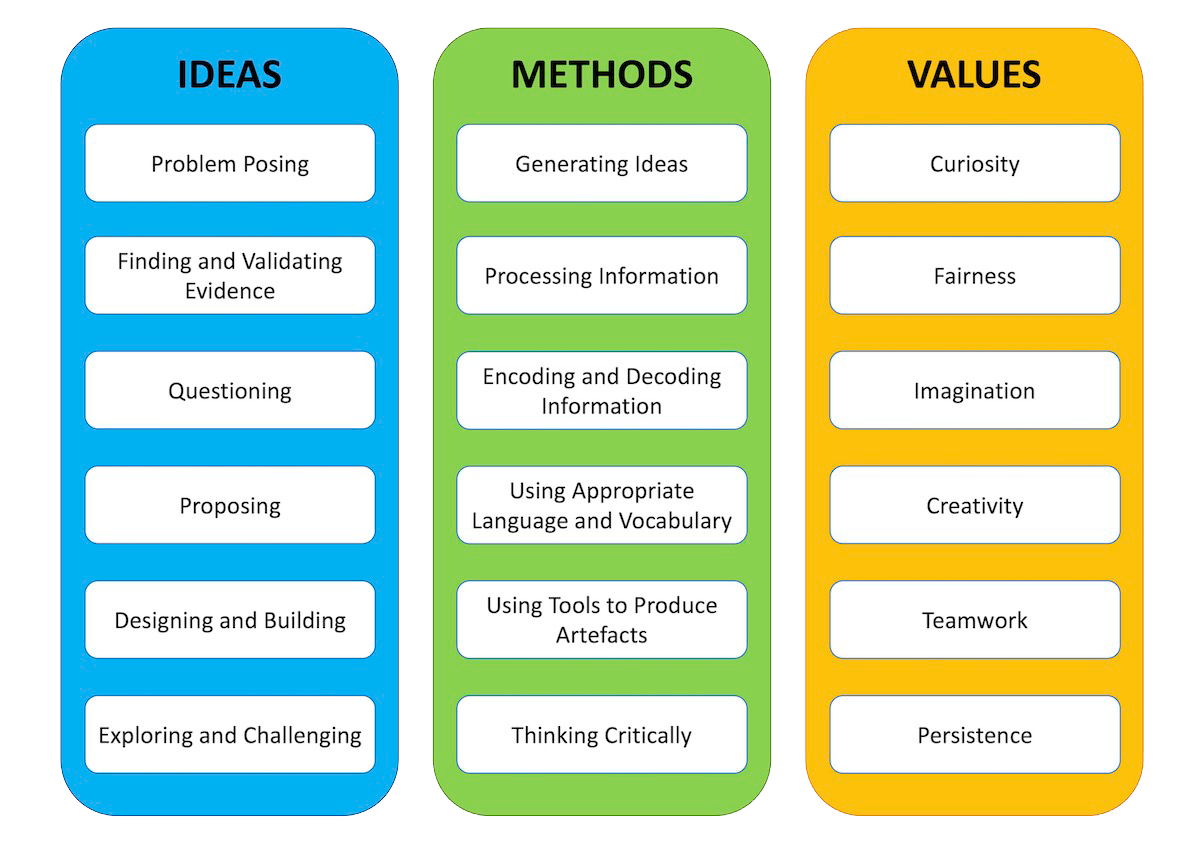STEM Practices

Professor Tom Lowrie initially developed the STEM Practices framework in 2017 for use in early learning education. However, the framework can be applied to any educational context. As such, STEM Practices are a key element of the MathsBURST program for primary school children.
MathsBURST’s use of STEM Practices is informed by research published by Lowrie, T., Leonard S. and Fitzgerald, R. (2018) “STEM Practices: A translational framework for large-scale STEM education design” Educational Design Research, 2 (1), 1-20.
Note: the STEM Practices framework is an adaptation of the practice architectures approach of Kemmis et al. (2014).
What are STEM Practices?
As the figure at the top of the page illustrates, STEM Practices are ideas, methods and values.
For example, a STEM:
- idea may be ‘questioning’ or ‘designing and building’
- method may be ‘processing information’ or ‘using tools to produce artefacts’
- value may be ‘creativity’ or ‘teamwork;
Traditional notions of STEM focus almost entirely on the individual disciplines that comprise the term (science, technology, engineering and mathematics). However, STEM Practices takes a broader approach to STEM. By identifying the ideas, methods and values that underpin STEM, this allows children to interrogate problems with a STEM lens.
The focus on practices helps ensure that STEM understandings relate to relevant contexts enacted through participation and engagement (Lowrie, Larkin, & Logan, 2019).
lian Curriculum Mathematics and state-based syllabus content descriptors and learning achievement standards.
STEM Practices in MathsBURST
STEM Practices are pertinent for the MathsBURST program because:
- they are context bound and, therefore, can meet the needs of any student. Students respond to what they are being taught by starting with what they know and building from there.
- teachers feel comfortable in using STEM Practices. This is, in part, because teachers don’t need specialist subject knowledge.
- they lend themselves to family and community involvement. Because examples of STEM Practices are found everywhere, they increase the real and perceived value of STEM, and allow for easy understanding of STEM applications.

STEM Practices © SPLAT-maths Pty Ltd. Reproduced with permission.
References
Larkin, K., Lowrie, T & Hope, R. (2019). A Review of the Literature Related to STEM Education. Prepared by SERC for the Department of Education and Training.
Lowrie, T., Larkin, K. & Logan, T. (2019). STEM and Digital Technologies in Play Based Environments: A New Approach. In G. Hine, S. Blackley, & A. Cooke (Eds.). Mathematics Education Research: Impacting Practice (Proceedings of the 42nd annual conference of the Mathematics Education Research Group of Australasia). Perth, Australia. MERGA.
Lowrie, T., Leonard S. and Fitzgerald, R. (2018) “STEM Practices: A translational framework for large-scale STEM education design” Educational Design Research, 2 (1), 1-20.
Lowrie, T., Logan, T. & Larkin, K. (2017). The “math” in STEM practices: The role of spatial reasoning in the early years. In A. Downton, S. Livy, & J. Hall (Eds.), 40 Years on: We are still learning. Proceedings of the 40th Annual Conference of the Mathematics Education Research Group of Australasia. Melbourne, Australia. MERGA
Lowrie, T., Downes, N., & Leonard, S. (2017). STEM education for all young Australians: A Bright Spots Learning Hub Foundation Paper, for Social Ventures Australia, in partnership with Samsung.
More About MathsBURST
To find out more about MathsBURST, download our Prospectus (PDF) or Information Booklet (PDF) below.
PAGES
MAILING LIST
MathsBURST acknowledges the Ngunnawal people, traditional custodians of the lands where we are situated. We wish to acknowledge and respect their continuing culture and the contribution they make to the life of Canberra and the region. We acknowledge the sorrow of the Stolen Generations and the impacts of colonisation on Aboriginal and Torres Strait Islander peoples. We also recognise the resilience, strength and pride of the Aboriginal and Torres Strait Islander communities.

